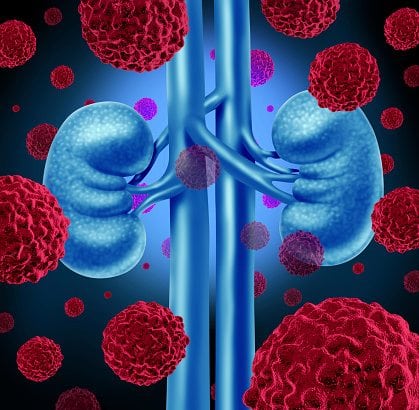Kidney cancer is among the 10 most common cancers in both men and women. According the American Cancer Society, about 63,990 new cases of kidney cancer will occur in 2017, with about 14,400 people expected to die from the disease.
March is National Kidney Month. Here’s nephrologist Dr. Jeffrey Laut with a Q & A on kidney cancer:
Q: What is a nephrologist?
A: Nephrologists treat patients with a wide spectrum of kidney diseases, mostly diabetes and hypertension. But we also treat those who have had or are contemplating kidney reduction surgery and are left with less than optimal kidney function, and are at risk for progressive kidney failure. We do not perform the surgeries or offer chemotherapy or radiation therapy.

Q: What are the signs and symptoms of kidney cancer?
A: There is both good and bad news to this question. First, the good news. The majority of kidney cancers these days are found “incidentally”; in other words, we find a kidney tumor while looking for something unrelated. For example, a patient gets an X-ray or CT scan of the spine for low back pain, and the radiologist notices an incidental and asymptomatic tumor. This is good news because it is usually early, small and easily resectable and curable. The bad news is that most kidney cancers offer no symptoms until they are large and advanced. And when they are, the most common symptoms are blood in the urine, sometimes (but not always) accompanied by pain in one’s side. Most of these are still treatable but may require not only surgery, but may require either chemotherapy or radiation therapy.
Q: What are some of the treatments offered for patients diagnosed with kidney cancer?
A: There are many effective treatments for kidney cancer, including laporoscopic and robotic surgery, chemotherapy, radiation therapy, and even dialysis and transplantation for those that need it. The advantage of having experienced surgeons and laparoscopic/robotic technology means that many times we are able to perform a partial removal of a kidney rather than a total removal of the kidney, This spares the patient from developing serious chronic kidney disease (CKD).
Q: How important is it for a patient’s treatment plan to be mapped out from the time he or she is diagnosed with kidney cancer?
A: Even though there are many commonalities to this disease, every patient and situation is different; therefore, each treatment plan requires individualization to the specific patient. When patients are relatively young and healthy and their tumor is simple, they are more easily treated with laparoscopic surgery. However, if a patient is older and has been diagnosed previously with a chronic condition, such as high blood pressure, diabetes or chronic kidney disease, the treatment plan requires a thoughtful team approach. Sometime, the treatment plan is “wait and watch,” which we call “active surveillance.” This gives us an opportunity to monitor the situation to see if the tumor changes or grows over time. That is often the best course of treatment when the tumor is small, as they tend to cause little, if any, concern.

